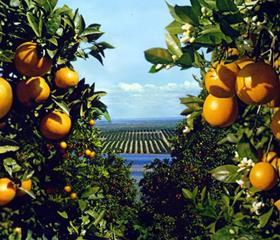
The Southern Hemisphere citrus crop is forecast to dip by 0.63 per cent to 6.5m tonnes this year, with exports, in turn, set to fall by 2.64 per cent to 2.3m tonnes, according to the data released by Shaffe and Freshfel Europe.
Production in Argentina, Australia, Chile, Peru, Uruguay and South Africa in 2011 will be down 7.74 per cent on the long-term average between 2003 and 2010, while exports are set to rise 3.2 per cent over the 2003-2010 average.
Given the early stage of the forecast, the figures might still change during the course of the season, Shaffe-Freshfel said in a press release.
Indeed, a number of factors may influence the development of the Southern Hemisphere citrus season, including the exchange rate in exporting countries compared with the euro and the US dollar; as well as the evolution of costs; the ongoing development of demand in emerging countries (namely in the Middle East and Asian markets); and the possible impact of the demand in Japan for grapefruit.
The lower Southern Hemisphere orange crop might also balance out the current poor orange market situation, mainly in Europe, the report report.
Other factors such as the on-going process of market diversification as well as the possible opening of new markets could also play a role as well as the permanent evolution of consumer demand.
Country-wise, Shaffe-Freshfel said Australian citrus is expected to recover with an 18.5 per cent crop rebound to 600,000 tonnes.
Both Argentina and Chile, meanwhile, will experience a moderate climb against last year with crop growth of 2 per cent to 2.04m tonnes and 522,000 tonnes respectively.
Conversely, South Africa’s volume will be down by 4.3 per cent to 2.16m tonnes – but the country still remains the single largest Southern Hemisphere citrus-producing supplier, according to the report.
Peru will also face a lower crop, with volume down by 6.1 per cent to 854,000 tonnes. And while Uruguay still only has provisional data available, production may decrease by 8.8 per cent compared with 2010, to 323,000 tonnes, the Shaffe-Freshfel said.
For individual categories of citrus, the report indicated that exports of oranges and mandarins will decrease by 8.5 per cent and 6.2 per cent respectively compared with last year’s peak export level.
Lemons and grapefruit, however, should both register higher exports, with sendings set to rise by 11 per cent and 16 per cent respectively.



